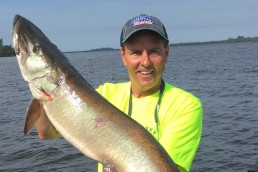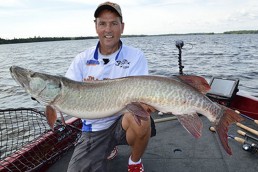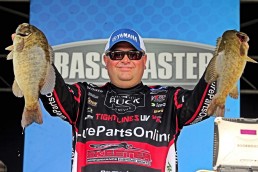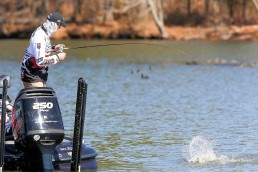SHARE THIS POST
As the water temperatures rocket in summer, the entire ecosystem ramps up, including the metabolism of a muskie. They can move fast to catch prey and they burn calories faster, so lure speed becomes your friend.
A common question is should you burn a bucktail, such as a Cowgirl, or slowly roll it just above the cover? Both can be effective in the heat, but ultimately, it all depends upon the muskies.
Here are a few guidelines I consider regarding cover and how fast to fish a bucktail.
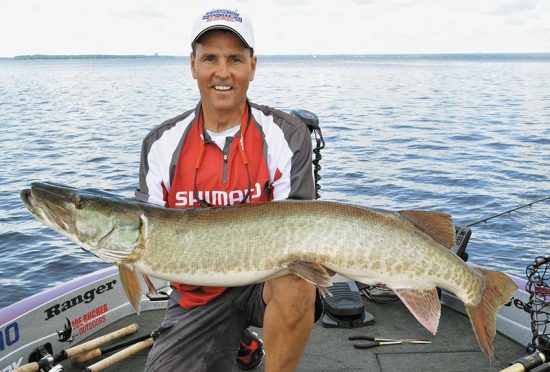
Generally, when around rocks I am fishing the bucktail fast. Lots of times the lure is running over shallow rocks, so you have to move the bait fast to keep the lure from getting hung. For some reason, it seems that quite often the fast-moving or burning bucktails get the strike when fishing in these spots.
Are you enjoying this post?
You can be among the first to get the latest info on where to go, what to use and how to use it!
When fishing weeds, my speed depends upon the depth of the weed growth and the color of the water. Shallow weeds that grow to only 8 feet deep or less generally get a faster speed in summer. In some shallow weed cover I’ll cast past the shallow weeds, lift my rod to raise the bucktail to work through the weed tops and then lower the rod tip once I come through the cover. This approach will trigger those fish hiding in the weeds. For shallow weeds, a few inches to 1 foot below the surface, a fast retrieve often gets muskies to bite in the heat. When fishing the weeds that grow beneath the surface to 8 feet and deeper, say 15 feet, the slower or medium retrieve seems to trigger more strikes. I think it’s important to keep the bait closer to the deeper weed cover even though the water is warm. It’s really interesting to fish a lake with both weeds and rocks and notice that to catch these on the rocks you need to crank fast and that to catch them on weeds you need to slow down—it’s strange, but true.
The above bucktail speed guidelines apply to fishing during the day. At night, I prefer to use a slow to medium speed for a retrieve. In fact, once the sun goes down I start to slow my retrieve speed down. It may still be light for a period between when the sun hits the tree line and at first dark, and slowing down can convert potential follows into tremendous strikes.
Consider all of these as guidelines, but each and every day try and figure out what the muskies want. If you are fishing a bucktail with a medium-speed retrieve and are getting follows, it’s a signal that you need to crank up the speed or at least try it for a few spots. Likewise, if burning a bucktail is producing follows, back off on your speed. And if there is a lull in the action, I’ll experiment with speeds, trying to trigger a strike. I have lots of memories of hot, flat days with no action, and by simply burning the Cowgirl, fish were triggered within an hour.
The most important thing to consider is being aware of what’s happening and responding to how the muskies are reacting. Follows are clues that you may need to do something different to get one to bite. And sometimes speeding up or slowing down is the answer in midsummer with bucktails.
MWO
SHARE THIS POST
Did you enjoy this post?
You can be among the first to get the latest info on where to go, what to use and how to use it!
Jim Saric
Jim Saric is a Legendary Angler in the Freshwater Fishing Hall of Fame, the host and executive producer of The Musky Hunter television series, editor at large of Musky Hunter magazine, a seven-time muskie tournament winner, and a contributing writer for numerous other publications.
